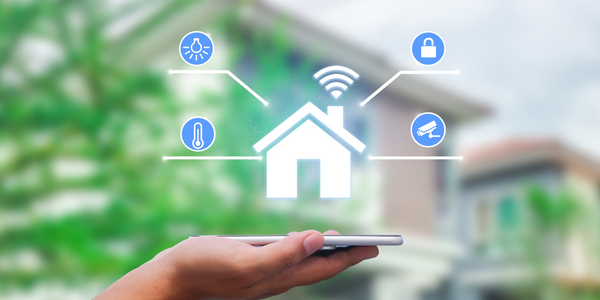Technology Category
- Networks & Connectivity - 5G
- Platform as a Service (PaaS) - Application Development Platforms
Applicable Industries
- Buildings
- Cement
Applicable Functions
- Procurement
Use Cases
- Building Automation & Control
- Real-Time Location System (RTLS)
Services
- System Integration
About The Customer
Zumper is a two-sided rental marketplace founded in 2012 with a mission to make renting an apartment 'easier, faster, and more human.' It is the third-largest and fastest-growing rental platform in North America, helping one in three people in the U.S. find their next home. Zumper aims to reduce the friction in the renting process for both renters and landlords through real-time search functionality, AI-powered tools, and in-app messaging. Their customer base ranges from large property management companies to individuals renting out their spare bedroom. With a user base of 90 million annually, Zumper is experiencing double-digit year-over-year growth.
The Challenge
Zumper, a two-sided rental marketplace, was facing a significant challenge in facilitating communication between renters and landlords. The initial contact was made through the platform, but all subsequent communication was conducted via email. This method was not only confusing for both parties but also posed a security risk as sensitive information like rental applications were shared over email. For landlords, managing multiple interested parties, scheduling tours, collecting applications, and processing fees via email was becoming unmanageable and leading to lost leads. The fragmented communication process was hindering the user experience and the overall rental journey.
The Solution
To address this challenge, Zumper decided to integrate Stream Chat API into their platform. This API was chosen for its scalability, real-time response capability, and robust tech support. The integration of in-app chat functionality provided a centralized platform for all housing-related communication, thereby streamlining the process and enhancing user experience. The chat feature also provided valuable insights into user behavior and interaction patterns through data analytics, enabling Zumper to continually improve their product. The decision to partner with an enterprise-grade API tech provider, instead of building an in-app chat feature themselves, allowed Zumper to focus on improving the user experience and overall rental journey.
Operational Impact
Quantitative Benefit

Case Study missing?
Start adding your own!
Register with your work email and create a new case study profile for your business.
Related Case Studies.

Case Study
System 800xA at Indian Cement Plants
Chettinad Cement recognized that further efficiencies could be achieved in its cement manufacturing process. It looked to investing in comprehensive operational and control technologies to manage and derive productivity and energy efficiency gains from the assets on Line 2, their second plant in India.

Case Study
Energy Saving & Power Monitoring System
Recently a university in Taiwan was experiencing dramatic power usage increases due to its growing number of campus buildings and students. Aiming to analyze their power consumption and increase their power efficiency across 52 buildings, the university wanted to build a power management system utilizing web-based hardware and software. With these goals in mind, they contacted Advantech to help them develop their system and provide them with the means to save energy in the years to come.

Case Study
Intelligent Building Automation System and Energy Saving Solution
One of the most difficult problems facing the world is conserving energy in buildings. However, it is not easy to have a cost-effective solution to reduce energy usage in a building. One solution for saving energy is to implement an intelligent building automation system (BAS) which can be controlled according to its schedule. In Indonesia a large university with a five floor building and 22 classrooms wanted to save the amount of energy being used.

Case Study
Powering Smart Home Automation solutions with IoT for Energy conservation
Many industry leaders that offer Smart Energy Management products & solutions face challenges including:How to build a scalable platform that can automatically scale-up to on-board ‘n’ number of Smart home devicesData security, solution availability, and reliability are the other critical factors to deal withHow to create a robust common IoT platform that handles any kind of smart devicesHow to enable data management capabilities that would help in intelligent decision-making

Case Study
Protecting a Stadium from Hazardous Materials Using IoT2cell's Mobility Platform
There was a need for higher security at the AT&T Stadium during the NFL draft. There was a need to ensure that nuclear radiation material was not smuggled inside the stadium. Hazmat materials could often be missed in a standard checkpoint when gaining entry into a stadium.








